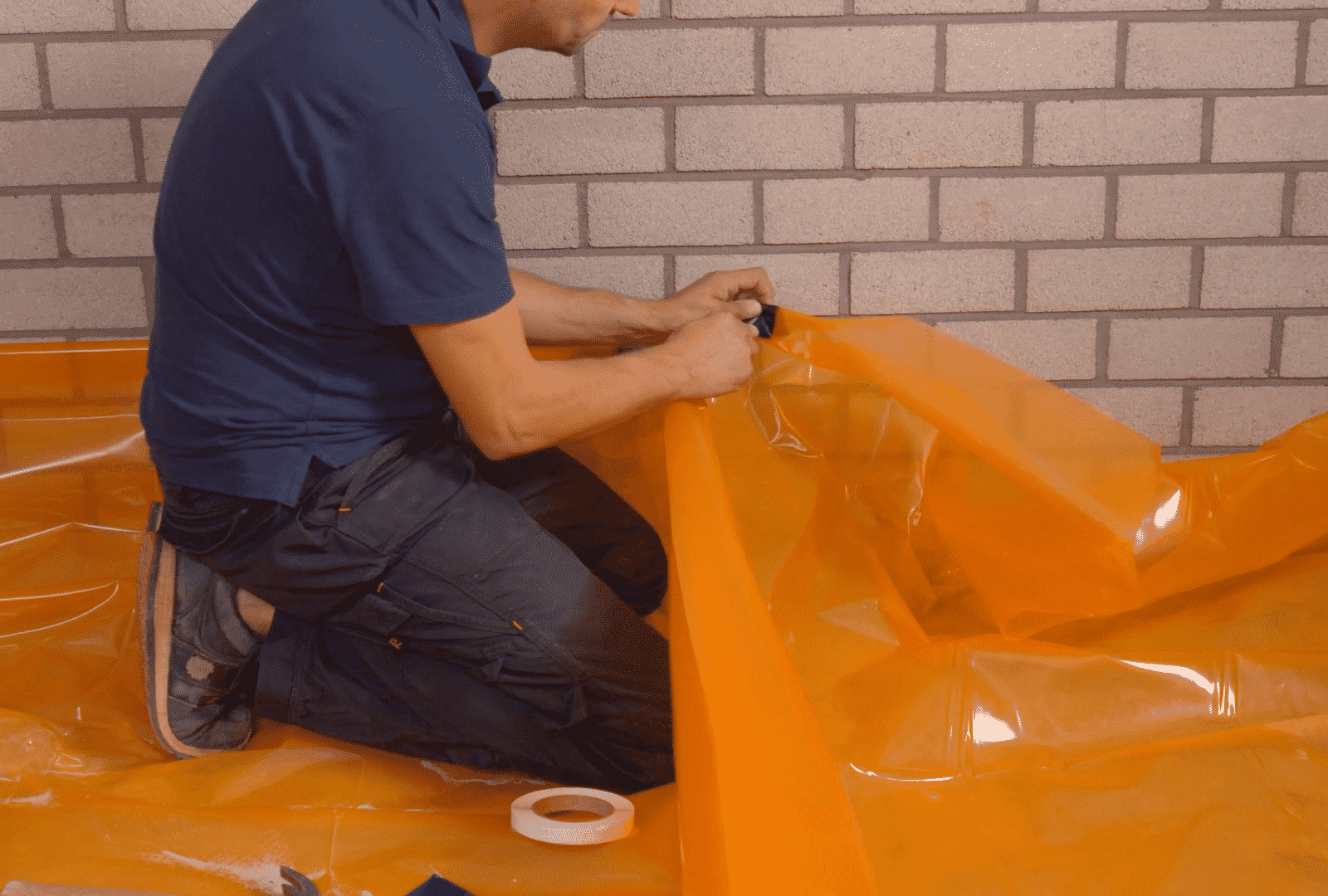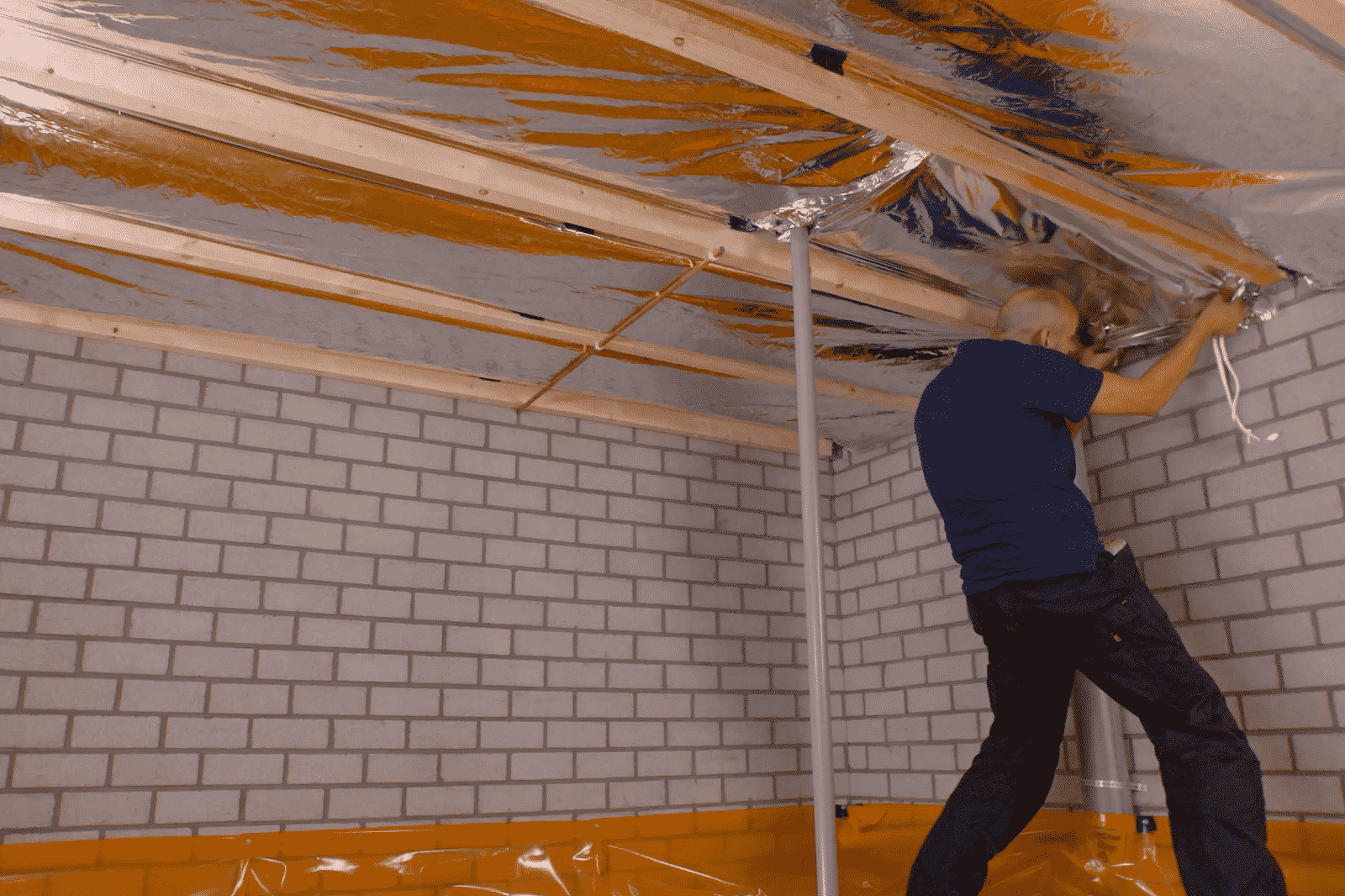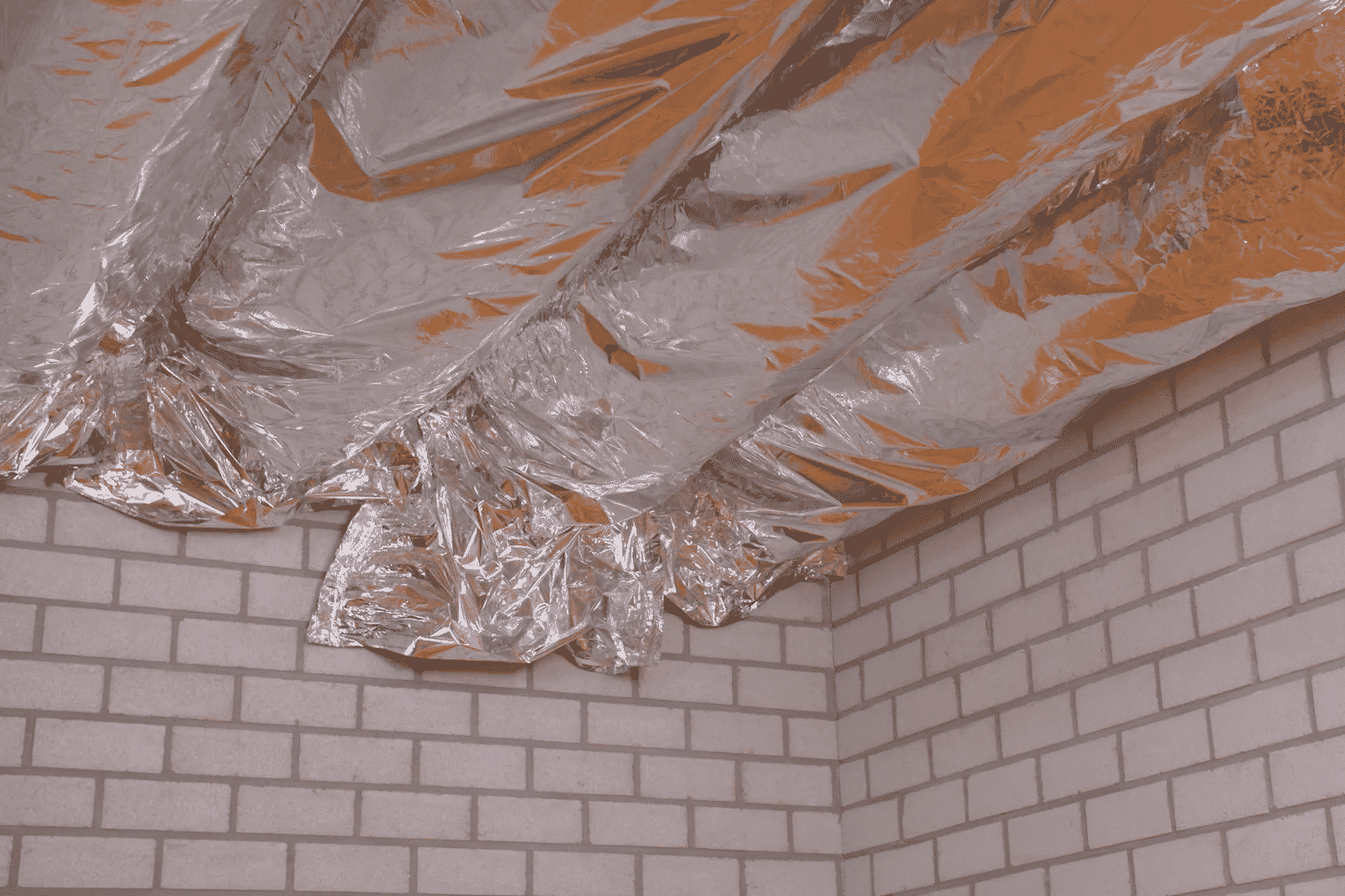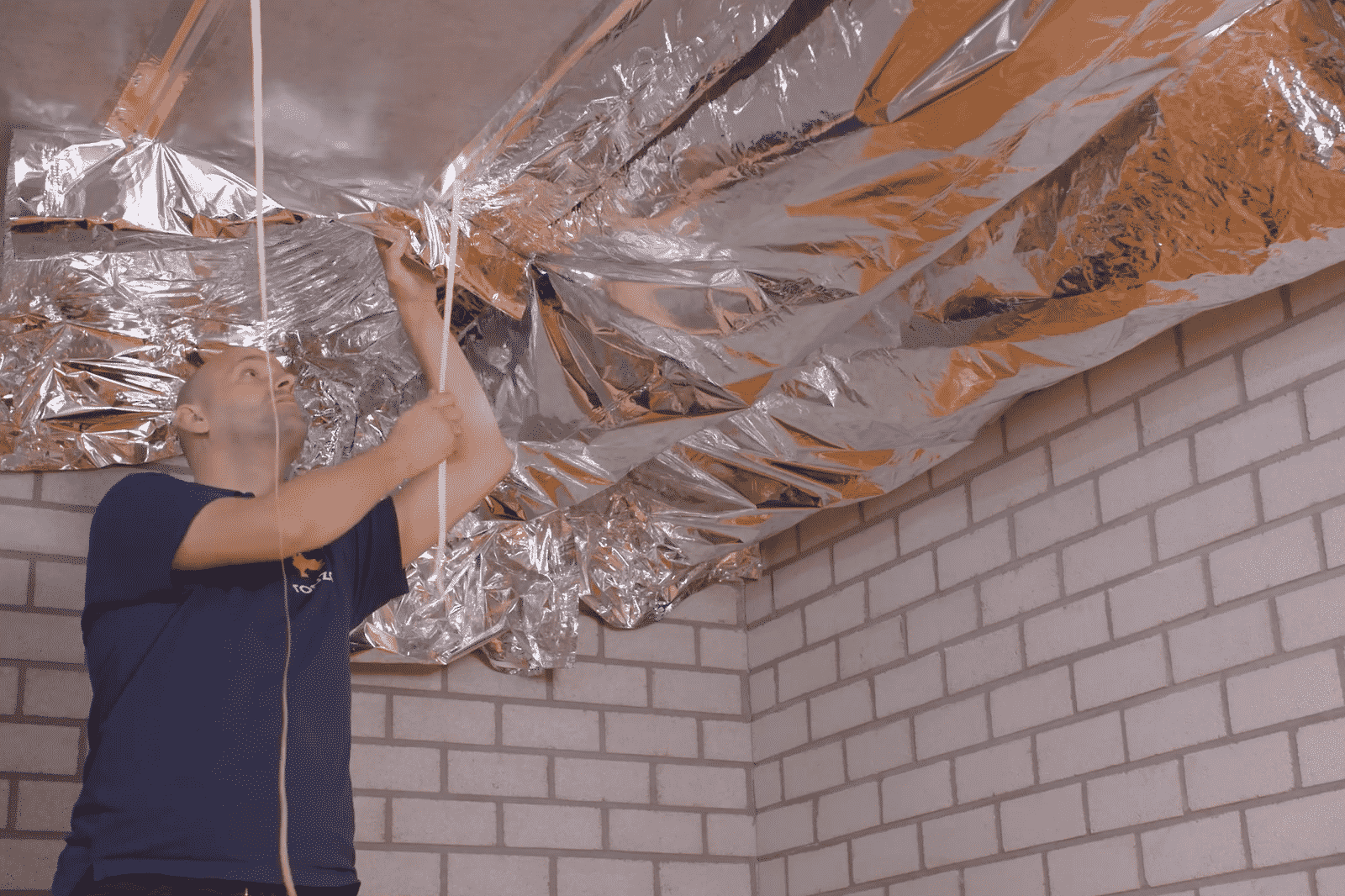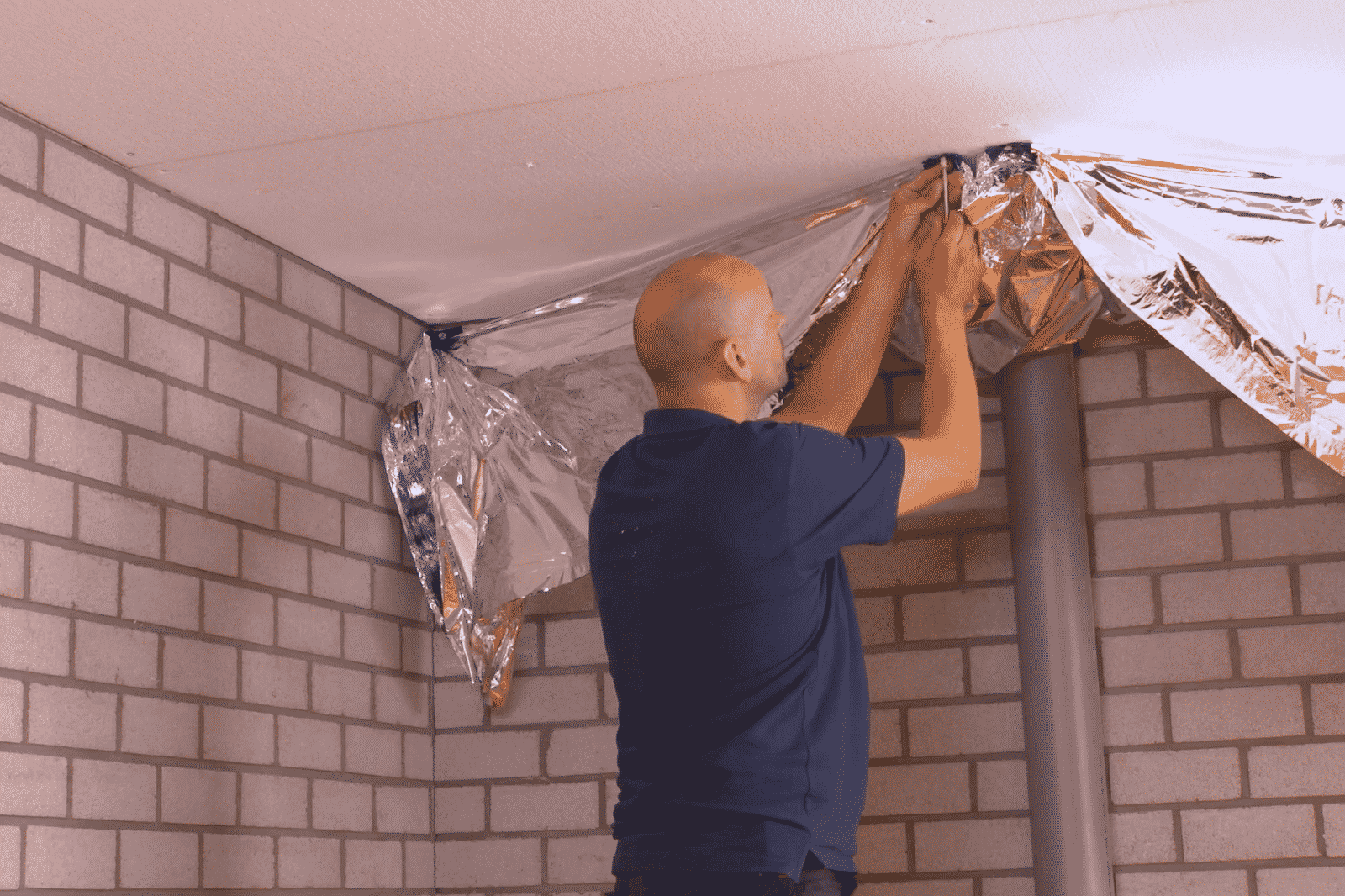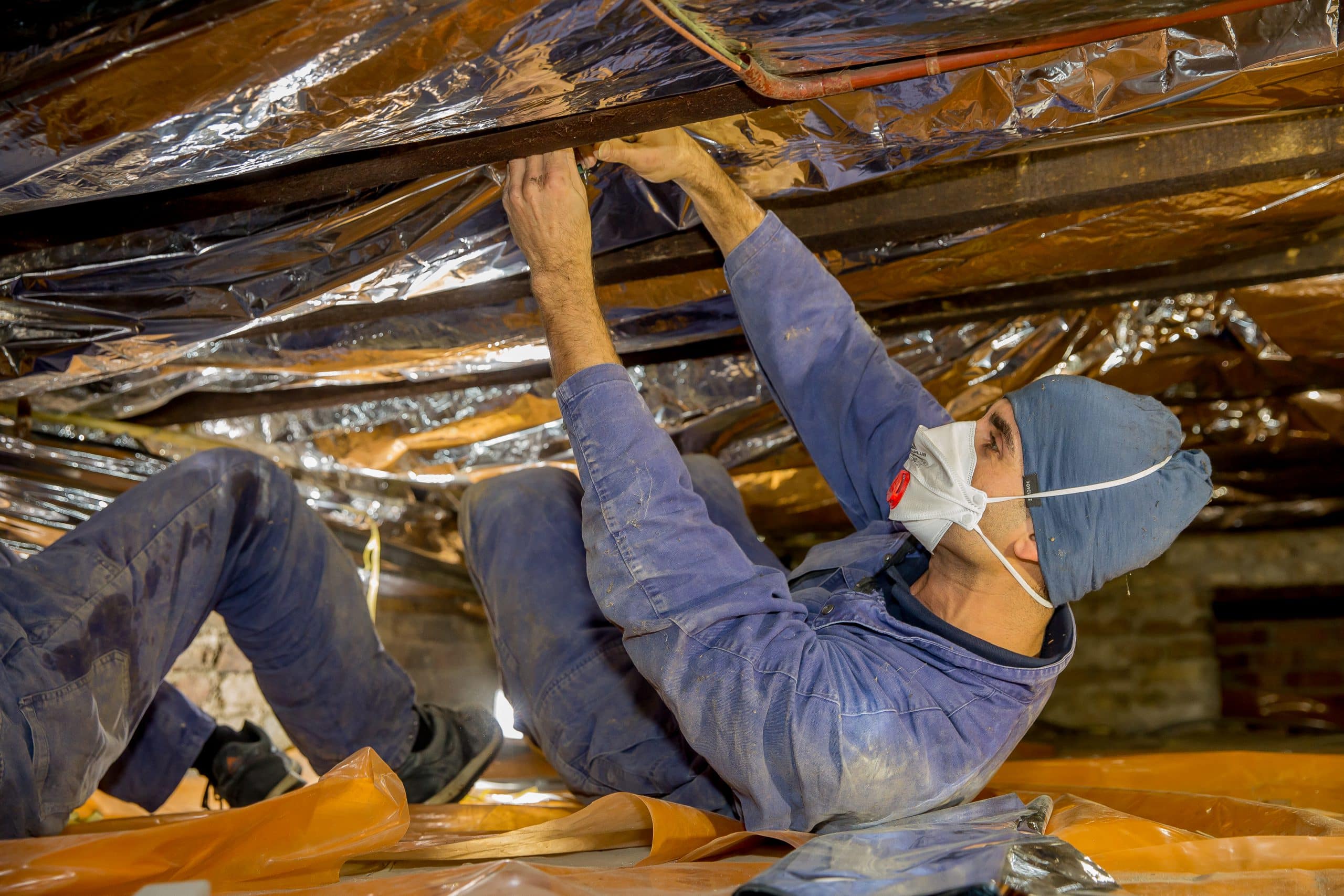
Working in the crawl space
For most people, the hardest part of the job is working in the crawl space. This space is often limited and the work is quite physically demanding. If the crawl space is small or contains much piping, the job can be made additionally difficult. We recommend starting by fitting the Soil Foil. This is not only a good way to practice working in the crawl space, it immediately ensures a dry floor on which to work. And our specialists are always on hand to get the job done for you if it does become too difficult!
! We recommend using cordless tools when working in the crawl space. Also ensure good lighting and ventilation. Read more about crawl space safety.
Measurement
Before you start, it is important to inspect the crawl space to determine how much material you need. Among other things, measure the length and width of the crawl space and the distance between the beams. Also keep an eye out for obstacles that may make fixing more difficult and which will probably result in your needing more material. Lastly, this is also the time to remove debris from the crawl space; mainly organic debris, as it is better not to leave it under the Soil Foil.
Soil Foil
When laying Soil Foil to cover the entire floor surface of the crawl space, it's important to use Foil without any holes in it. Obstacles in the crawl space may require the crawl space to be divided into several areas. At least 50cm must be added to the length and to the width of every piece of Soil Foil, so there's enough to mount it up against the foundation walls. If the Soil Foil is to be pleated around obstacles or installed at a higher level (due to a higher water level), allow even more than 50cm.
Check out the handy instructional videos and instruction manuals below for more information on measurements.
.
Thermos Cushions
The Thermos Cushion should always be wider and longer than the area to be insulated, so that the cushion can hang down properly and fill with air. How much wider and longer the cushions should be depends on the desired insulation thickness. A minimum of 15 cm is recommended for the three-chamber Thermos Cushion and 25 cm for the four-chamber Thermos Cushion. In addition, allow 5cm extra for fixing, so the above minima become 20 and 30 cm in total.
Additional length is also needed at both ends of the cushion strip, to properly seal the ends of the cushion. So provide a total of at least 40/60 cm extra length and 20/30 cm extra width per Thermos Cushion.
The recommended working widths per Thermos Cushion are provided in the web shop product information.
- Divide the floor into strips, for example those between the wooden beams, and record the length and width of each strip. Note any obstacles.
- Determine the required depth or thickness of the cushions when they are fitted, hanging down and filled with air. This depends on the desired insulation value and available space. However, thicker is always better.
- The extra width of Thermos Cushions is equal to their thickness or depth when hanging, plus to allow for mounting. Add twice this number to the length of each Thermos Cushion. At a hanging thickness of 15 cm, this would require 20 cm extra width and 40 cm extra length.
- If there are any obstacles, calculate the extra length to work around them, or divide the strip into two parts and use two separate Thermos cushions.
Covering the ground
Laying TONZON Soil Foil is often an easy DIY job. The product is a sturdy liner, used to cover the (soil) floor of the crawl space. In addition to the other benefits, Soil Foil provides dry floor on which to work. What you'll need.
Download the instructions for installing Soil Foil or watch the video alongside.
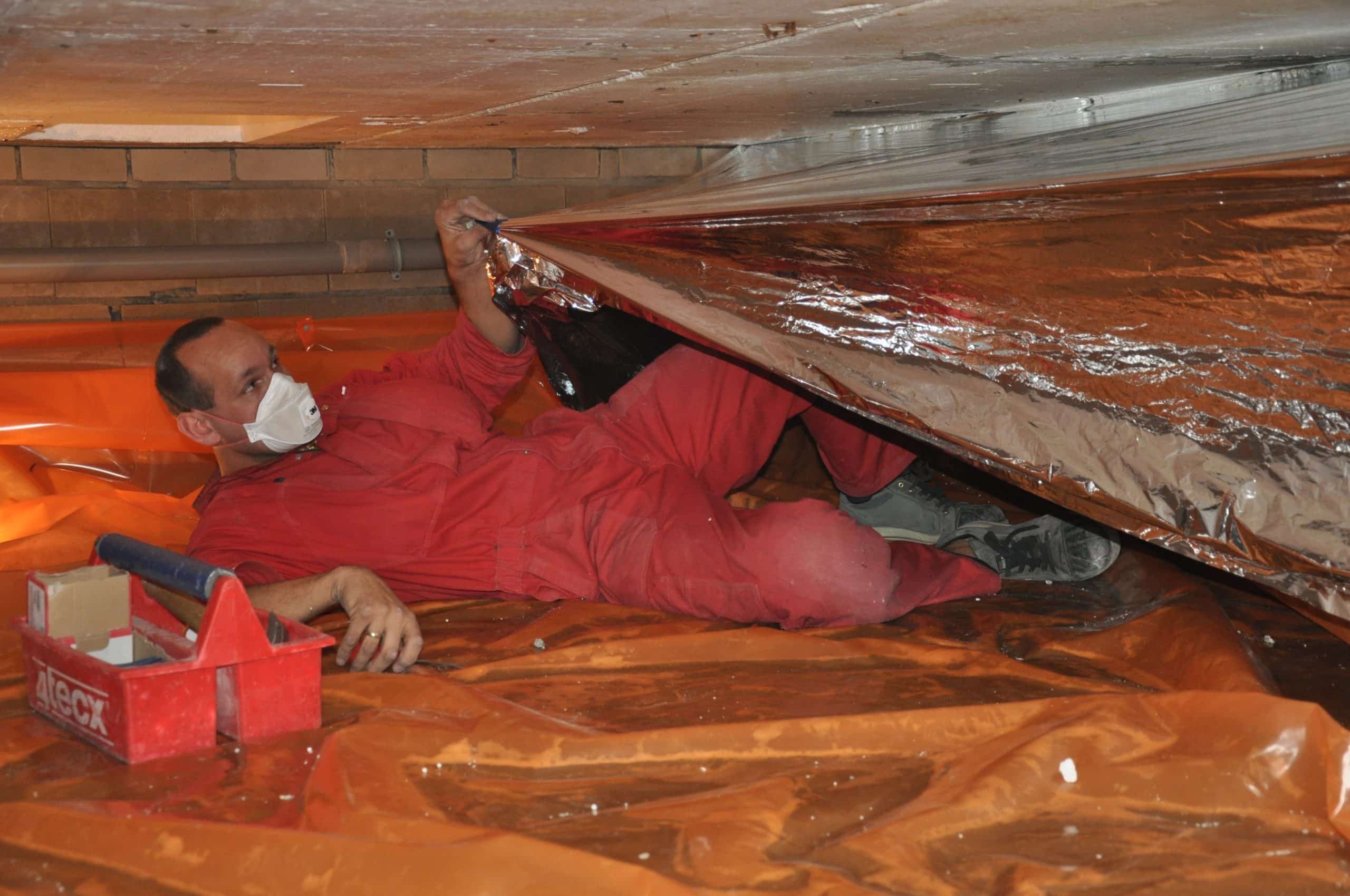
Insulating the floor yourself
Once the Soil Foil has been laid and the crawl space is dry, you can apply the insulation. This is done using Thermos Cushions. These are bags of TONZON foil that are filled with air. You apply the cushions in strips. They only need to be hung and sealed.
There are two ways to attach them:
- Mechanical fixing: this is done with staples, plugs or screws. For stone and concrete floors, drilling is required. In addition, the Cushion should be reinforced at the points of attachment, using foil reinforcers.
- Pasting method: the Cushions can also be glued to the underside of the floor. This is mostly done with special mounting tape.
Wooden floor insulation
Wood floors are often the easiest to insulate. As the Cushions can be stapled to the beams. What you'll need:
- Tailor-made Thermos Cushions.
- Foil reinforcers.
- Stapler and staples.
- Awl.
Download the instructions for wooden floors, or watch the video alongside.
Insulating a concrete or stone floor
There are two options for concrete and stone floors. Mechanical fixing requires drilling in the crawl space. Therefore, it is often easier to use the adhesive method. For mechanical fixing, you will need the following:
- Thermos Cushions, cut to size.
- Foil reinforcers.
- Foil plugs.
- Power drill
- Awl.
Download the instructions for concrete floors or watch the video alongside.
Installation method using adhesive mounting tape
The mounting tape is like a roll of wallpaper with integral adhesive strips for mounting the Cushions. If it can be glued firmly to the underside of the floor, it is an ideal way to attach the Thermos Cushions. The mounting tape method requires:
- Thermos Cushions, cut to size.
- Mounting tape.
- Adhesive paste for glass fibre wallpaper.
Download the instructions for using mounting tape or view the video alongside.
Insulated floor
If the floor has already been insulated with Pur or EPS foam, TONZON can still significantly improve the insulation value. The Thermos Cushions are then mounted directly onto the foam, using special screws. For this, you will need the following:
Download the instructions for insulated floors or watch the video alongside.


